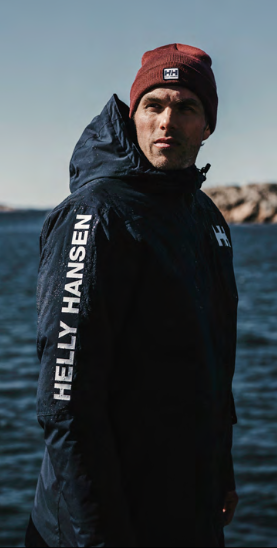
by Maria Cristina Pavarini — January 25, 2021
At the start of the pandemic with social distancing imposed and travel halted, it was difficult for the fashion industry to review physical samples, with sample production severely delayed, or even cancelled altogether. That was the point in time when Norwegian sportswear brand Helly Hansen turned to digital solutions and 3D Connect technology, mainly to adapt to recent market disruptions, particularly around sample production. At the same time, the company discovered it could also become more sustainable in the process and reduce its carbon footprint due to a decreased need for physical samples, reduced shipping and material waste.
“During the disruptions of the Covid-19 pandemic, we were able to save weeks of work during our product development process with the ability to quickly create and review 3D samples created within Centric Software’s Product Lifecycle Management (PLM),” Helly Hansen states.
The company faced other logistic problems before: In 2018 Helly Hansen Group acquired sailing gear specialist Musto and had to struggle with data management, visibility and version control across multiple software platforms, while integrating the new brand within its own company organization.
“One of our biggest challenges was a lack of accountability, with each department using different tools and platforms. […] In order to develop innovative, high-quality products efficiently, we needed a clear overview of who was doing what, where and when,” said Ferdinand Diener, process and quality manager, Helly Hansen. According to Diener, also in this case new software helped to act fast and was easy to use, so people are able to do a more thorough job, create more products and improve quality oversight.

“We use a special software that now helps us with communication, and we can do things last minute that we couldn’t have done previously. For example, if a physical sample isn’t available, or we don’t want to wait weeks for a prototype to arrive, we can create a 3D version in a matter of hours,” said designer Mhairi Bannerman, who works within the ski and sailing team on Helly Hansen’s technical garments.
“In comparison to a sketch, a 3D rendering is miles ahead, and it enables us to communicate much easier with vendors from the start,” he continued. “It’s a much more efficient process, as you suddenly see exactly what the designer has in mind, not an artistic interpretation of an illustrated sketch. You see ratios, sizes and where the cut lines should be. So, not only are we able to see prototypes in 3D weeks before physical ones are available, but the final iteration is going to be a step up from what it would have been previously.”
Founded in Norway in 1877, Helly Hansen is a specialist in technical sailing and performance ski apparel. It also sells premium workwear, outerwear, base layers, sportswear and footwear in more than 40 countries. The company claims to have launched the first supple waterproof fabrics introduced more than 140 years ago.
